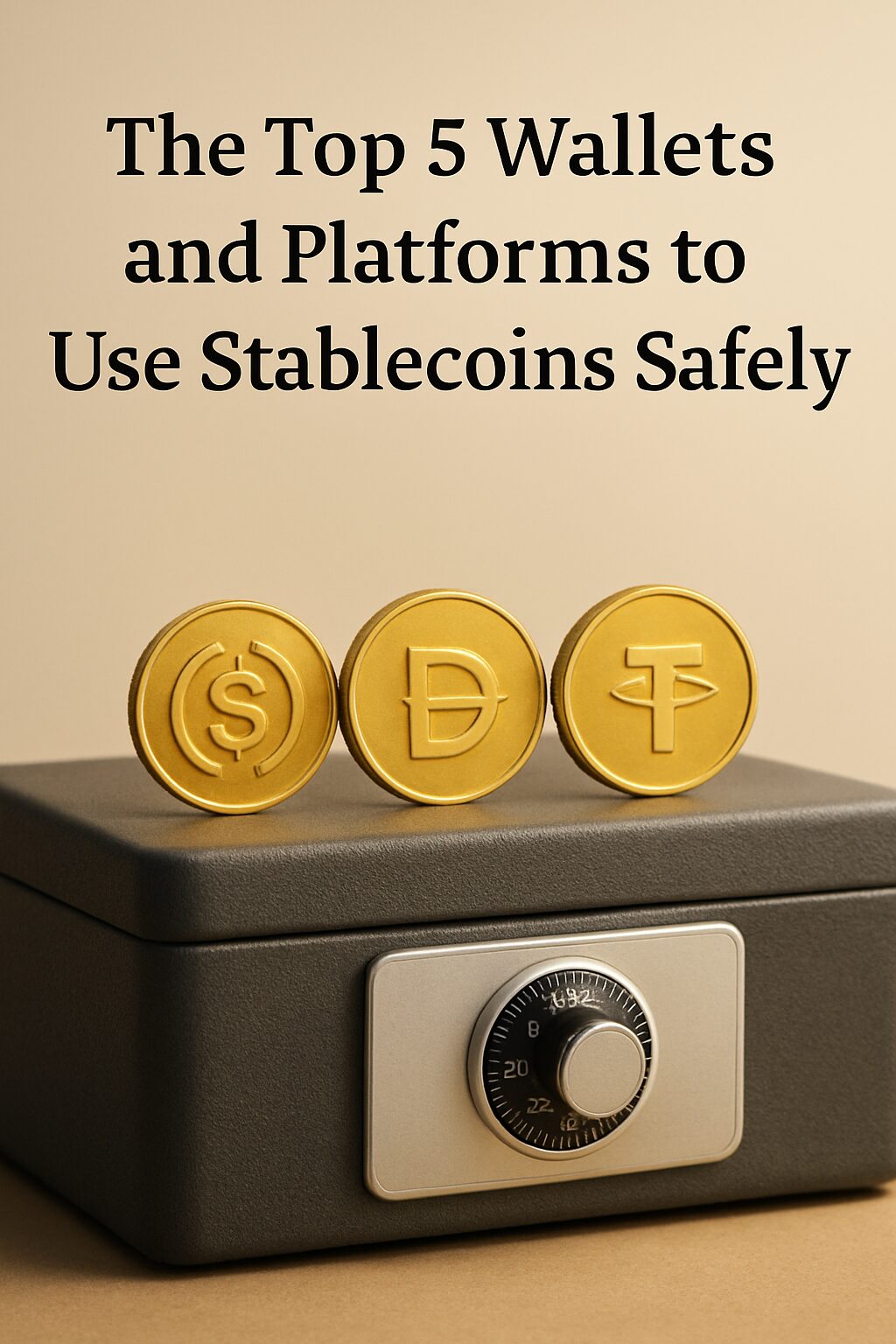Safe Storage Is Everything
So you’ve chosen your stablecoin — maybe USDC, DAI, or USDT.
But here’s the big question:
Where should you actually store and use it?
Choosing the wrong wallet or platform can put your funds at risk — through hacks, freezes, or technical failures.
This guide introduces the 5 best wallets and platforms for using stablecoins safely, whether you’re a beginner or a seasoned investor.
We compare them by:
- Security and control
- Supported stablecoins
- Usability (mobile, desktop, browser)
- DeFi integration
- Fees and features
Let’s dive in.
1. MetaMask – Best for DeFi and Decentralized Control
Overview
MetaMask is the most widely used non-custodial crypto wallet.
It’s available as a browser extension and mobile app.
Why It’s Great for Stablecoins
- Supports USDC, DAI, USDT, FRAX and more
- Integrated with hundreds of DeFi protocols
- Private keys stored locally
- No centralized account required
Pros
- Full control over your assets
- Compatible with Ethereum, Arbitrum, Polygon, and more
- Trusted by over 30M users
Cons
- UI may be confusing for beginners
- You must manage gas fees manually
- Requires self-responsibility for recovery phrase
Best For
DeFi users, freelancers receiving crypto, and anyone who wants real ownership
2. Trust Wallet – Best for Mobile Simplicity
Overview
Trust Wallet is a secure, beginner-friendly mobile wallet owned by Binance (but non-custodial).
Why It’s Great for Stablecoins
- Supports major and niche stablecoins on multiple chains
- Simple interface and in-app token swaps
- Works with DeFi dApps via WalletConnect
Pros
- Easy to install and use
- Private keys stored on-device
- No personal data required
Cons
- Mobile-only (no desktop version)
- Can be overwhelming due to number of tokens supported
Best For
Users who want a simple, secure mobile experience for holding and using stablecoins
3. Ledger Nano X – Best for Cold Storage and Large Holdings
Overview
Ledger is a hardware wallet — meaning your private keys are stored offline, away from hacks.
Why It’s Great for Stablecoins
- Supports most stablecoins across multiple chains
- Perfect for long-term holders and high-value balances
- Works with DeFi via Ledger Live and MetaMask pairing
Pros
- Maximum security
- Immune to phishing and malware
- Optional Bluetooth mobile support
Cons
- Costs ~$150
- Requires physical device for all transfers
- Not ideal for daily trading
Best For
Users storing $5,000+ in stablecoins or prioritizing long-term safety
4. Coinbase Wallet – Best for Beginners and U.S. Compliance
Overview
Not to be confused with the Coinbase exchange, Coinbase Wallet is a self-custody wallet that works separately.
Why It’s Great for Stablecoins
- Designed with usability and security in mind
- Easy to receive USDC, USDT, and DAI
- Direct bridge to Coinbase Exchange
- ENS support and Web3 integration
Pros
- Beginner-friendly UI
- Excellent customer support
- Smooth integration with Ethereum ecosystem
Cons
- Slightly fewer advanced DeFi tools than MetaMask
- Limited non-EVM chain support
Best For
New users who want simple, compliant, and secure access to stablecoin features
5. Aave Protocol (with Wallet Integration) – Best for Earning Yield
Overview
Aave is a leading decentralized lending platform.
You don’t store funds on Aave itself — instead, you connect wallets like MetaMask or Ledger to deposit stablecoins and earn interest.
Why It’s Great for Stablecoins
- Lend USDC, DAI, USDT, GUSD, etc.
- Earn passive income with variable APR
- Fully decentralized smart contract-based system
Pros
- Non-custodial
- Transparent interest rates
- Strong security audits and governance
Cons
- Requires Web3 wallet setup
- Smart contract risk
- Interest rates fluctuate
Best For
Stablecoin holders who want to earn passive income without leaving Web3
Quick Comparison Table
| Platform | Custody | Devices | Supports | Best For |
|---|---|---|---|---|
| MetaMask | Self | Browser/Mobile | USDC, DAI, USDT | DeFi users & pros |
| Trust Wallet | Self | Mobile Only | Wide | Beginners on mobile |
| Ledger Nano X | Self (cold) | Hardware | Most | Long-term safety |
| Coinbase Wallet | Self | All | USDC, DAI, USDT | U.S. beginners |
| Aave (via wallet) | Wallet-based | All | Many | Yield seekers & investors |
Security Tips When Using Wallets
No matter which wallet or platform you choose:
- Always back up your recovery phrase and store it offline
- Use hardware wallets for large balances
- Double-check URLs to avoid phishing attacks
- Set spending limits in DeFi protocols when possible
- Keep software updated to patch vulnerabilities
Final Thoughts: Your Wallet = Your Risk Profile
There is no “best wallet” for everyone — only the one that fits your use case, habits, and risk level.
- For everyday spending: Trust Wallet or Coinbase Wallet
- For passive income: Aave + MetaMask
- For max safety: Ledger
- For Web3 access: MetaMask or Trust
Choose carefully, and remember:
In crypto, custody is everything.
